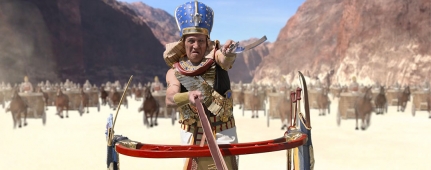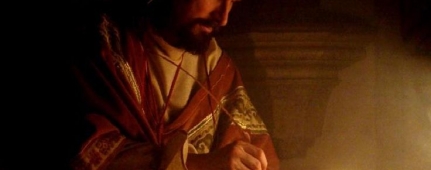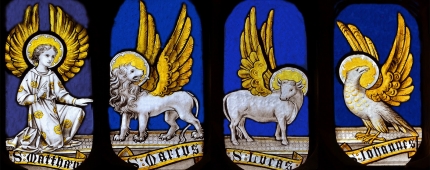Editor’s note: While this short e-booklet does not deal with the topic of inerrancy, we have permission from the publisher to repost it for our entire audience for free. You can click here to purchase the PDF version from the publisher or click here for copyright info.
The Shack: Helpful or Heretical?
By Norman L. Geisler and Bill Roach. Published by Bastion Books, P.O. Box 1033, Matthews, NC 28106, USA. Copyright © 2012 Norman L. Geisler. All rights reserved.
Introduction
Literally hundreds of thousands have been blessed by its message, but its message is precisely what calls for scrutiny. Responses to The Shack range from eulogy to heresy. Eugene Peterson, author of The Message predicted that The Shack “has the potential to do for our generation what John Bunyan’s Pilgrim’s Progress did for his. It’s that good!” Emmy Award Winning Producer of ABC Patrick M. Roddy declares that “it is a one of a kind invitation to journey to the very heart of God. Through my tears and cheers, I have been indeed transformed by the tender mercy with which William Paul Young opened the veil that too often separated me from God and from myself.” People from all walks of life are raving about this book by unknown author “Willie” Young, son of a pastor/missionary, and born in Canada. He is a graduate of Warner Pacific College in Portland, Oregon.
The Background of the Book
The Shack is Christian fiction, a fast-growing genre in the contemporary Christian culture. It communicates a message in a casual, easy-to-read, non-abrasive manner. From his personal experience, Young attempts to answer some of life’s biggest questions: Who is God? Who is Jesus? What is the Trinity? What is salvation? Is Jesus the only way to Heaven? If God, then why evil? What happens after I die?
In the final section of the book titled “The Story behind THE SHACK,” he reveals that the motivation for this story comes from his own struggle to answer many of the difficult questions of life. He claims that his seminary training just did not provide answers to many of his pressing questions. Then one day in 2005, he felt God whisper in his ear that this year was going to be his year of Jubilee and restoration. Out of that experience he felt lead to write The Shack. According to Young, much of the book was formed around personal conversations he had with God, family, and friends (258-259). He tells the readers that the main character “Mack” is not a real person, but a fictional character used to communicate the message in the book. However, he admits that his children would “recognize that Mack is mostly me, that Nan is a lot like Kim, that Missy and Kate and the other characters often resemble our family members and friends” (259).
The Basic Story of the Book
The story centers on a note that Mack, the husband and father in the story, received from “Papa,” who is supposed to represent God the Father. It reads, “Mackenzie, It’s been a while. I’ve missed you. I’ll be at the shack next weekend if you want to get together” (19). From this, the story moves through the personal struggles Mack has with such questions as: Why would someone send me this letter? Does God really speak through letters? How would my seminary training respond to this interaction between God and man? The story takes a turn when Mack’s son almost drowns while canoeing. During the chaos his daughter is abducted and eventually killed. This is what caused Mack to fall into what the book calls “The Great Sadness.” This time period is supposed to reflect his spiritual condition after the death of his daughter and the questions he has been asking for many years.
Grieved with the death of his daughter and the possibility that the note might be from God, Mack packs his bags and heads for the shack. The point of this journey is to suggest that his traditional teaching, Sunday prayers, hymns, and approach to Christianity were all wrong. He comes to the conclusion that “cloistered spirituality seemed to change nothing in the lives of people he knew, except maybe Nan [his wife]” (63). In spite of being an unlikely encounter with God, Young uses this fictional encounter as a vehicle for Mack’s spiritual journey and encounter at the shack.
While at the shack, Mack discovers that God is not what we expect Him to be. In fact, God the Father appears as a “large beaming African-American woman,” Jesus is presented as a “Middle Eastern and was dressed like a laborer, complete with tool belt and gloves,” and the Holy Spirit is named Sarayu, “a small, distinctively Asian woman.” The book identifies these three people as the Trinity (80-82). After trying to reconcile his seminary training with this new encounter with God, he concludes that what he had learned in seminary was of no help.
An Evaluation of the Book
Young’s point is clear: forget your preconceived notions about God, forget your seminary training, and realize that God chooses to appear to us in whatever form we personally need; He is like a mixed metaphor. We cannot fall back into our religious conditioning (91). The Shack attempts to present a Christian worldview through the genre of religious fiction, but just how Christian it is remains to be seen.
Problem One: A Rejection of Traditional Christianity
Beneath the surface of The Shack is a rejection of traditional Christianity (179). He claims that traditional Christianity did not solve his problem. Even Seminary training didn’t help (63). He insists that Christianity has to be revised in order to be understood, reminiscent of McClaren’s Emergent Church book titled, Everything Must Change. However, one might question whether it is Christianity that needs revision or Christians that need to be revitalized. One thing is certain; Christianity should not be rejected because it has some hypocritical representatives. To be sure, some seminary training is bad, and even good seminary training doesn’t help, if you don’t heed it. But the baby should not be thrown out with the bathwater. Christ established the Church and said the gates of hell would not prevail against it (Mat. 16:16-18). The Shack, as gripping as its story is, trades a church occupied with people who hear the Word of God preached for an empty shack where there is neither.
Problem Two: Experience Trumps Revelation
An underlying problem with the message of The Shack is that it uses personal experience to trump divine revelation. The solutions to life’s basic problems come from extra-biblical experience, not from Scripture (80-100). Non-biblical voices are given precedent over the voice of God in Scripture. These alleged “revelations” from the “Trinity” in the shack are the basis of the whole story. While biblical truth is alluded to, it is not the authoritative basis of the message. In the final analysis, it is experience that is used to interpret the Bible; it is not the Bible that is used to interpret experience. This leads to a denial of a fundamental teaching of Evangelicalism.
Problem Three: The Rejection of Sola Scriptura
The Shack rejects the sole authority of the Bible to determine matters of faith and practice. Rather than finding a Bible by the altar in a little old country church and getting comfort and counsel from the Word of God, he is instructed to go to an empty shack in the wilderness with no Bible and get all he needs to cope with the tragedies of life from extra-biblical voices. The Shack’s author rejects what “In seminary he had been taught that God had completely stopped any overt communication with moderns, preferring to have them only listen to and follow sacred Scripture…. God’s voice had been reduced to paper…. It seemed that direct communication with God was something exclusively for the ancients…. Nobody wanted God in a box, just in a book” (63).
However, the Bible clearly declares that “Scripture is God-breathed and profitable for teaching, for reproof, for correction, and for training in righteousness, that the man of God may be competent for every good work” (2 Tim. 3:16-17, emphasis added). Indeed, our comfort is not found in extra-biblical revelations but is realized in that “through the encouragement of the Scriptures we might have hope” (Rom. 15:4). In short, the Bible is sufficient for faith and practice. No new truth beyond the Bible is needed for doctrine or living the Christian life. Of course, this does not mean that God cannot bring biblical principles to our minds when needed through various experiences, even tragic ones. He can and He does. Nor does it mean that God cannot guide in circumstances that help us in the application of biblical principles to our lives. He can and He does. But these experiences bring no new revelation. They are merely the occasion for God focusing our attention on the only infallible written source of His revelation, the Bible and the Bible alone. To forsake this fundamental principle is to leave Protestantism for Mysticism.
Problem Four: An Unbiblical View of the Nature and Triunity of God
In addition to an errant view of Scripture, The Shack has an unorthodox view of the Trinity. God appears as three separate persons (in three separate bodies) which seems to support Tritheism in spite of the fact that the author denies Tritheism (“We are not three gods”) and Modalism (“We are not talking about One God with three attitudes”—p. 100). Nonetheless, Young departs from the essential nature of God for a social relationship among the members of the Trinity. He wrongly stresses the plurality of God as three separate persons: God the Father appears as an “African American woman” (80); Jesus appears as a Middle Eastern worker (82). The Holy Spirit is represented as “a small, distinctively Asian woman” (82). And according to Young, the unity of God is not in one essence (nature), as the orthodox view holds. Rather, it is a social union of three separate persons. Besides the false teaching that God the Father and the Holy Spirit have physical bodies (since “God is spirit”—John. 4:24), the members of the Trinity are not separate persons (as The Shack portrays them); they are only distinct persons in one divine nature. Just as a triangle has three distinct corners, yet is one triangle. It is not three separate corners (for then it would not be a triangle if the corners were separated from it). Even so, God is one in essence but has three distinct (but inseparable) Persons: Father, Son, and Holy Spirit.
Problem Five: An Unbiblical View of Punishing Sin
Another claim is that God does not need to punish sin. He states, “At that, Papa stopped her preparations and turned toward Mack. He could see a deep sadness in her eyes. ‘I am not who you think I am, Mackenzie. I don’t need to punish people for sin. Sin is its own punishment, devouring you from the inside. It is not my purpose to punish it; it’s my joy to cure it’” (119). As welcoming as this message may be, it at best reveals a dangerously imbalanced understanding of God. For in addition to being loving and kind, God is also holy and just. Indeed, because He is just He must punish sin. The Bible explicitly says that” the soul that sins shall die” (Eze. 18:2). “I am holy, says the Lord” (Lev. 11:44). He is so holy that Habakkuk says of God, “You…are of purer eyes than to see evil and cannot look at wrong…” (Hab. 1:13). Romans 6:23 declares: “The wages of sin is death….” And Paul added, “‘Vengeance is mine, I will repay’ says the Lord” (Rom. 12:19).
In short, The Shack presents lop-sided view of God as love but not justice. This view of a God who will not punish sin undermines the central message of Christianity—that Christ died for our sins (1 Cor. 15:1f.) and rose from the dead. Indeed, some emergent Church leaders have given a more frontal and near blasphemous attack on the sacrificial atonement of Christ, calling it a “form of cosmic child abuse—a vengeful father, punishing his son for offences he has not even committed” (Steve Chalke, The Lost Message of Jesus, 184). Such is the end of the logic that denies an awesomely holy God who cannot tolerate sin was satisfied (propitiated) on behalf of our sin (1 John 2:1). For Christ paid the penalty for us, “being made sin for us that we might be made the righteousness of God through him” (2 Cor. 5:21), “suffering the just for the unjust that He might bring us to God” (1 Peter 3:18).
Problem Six: A False View of the Incarnation
Another area of concern is a false view of the person and work of Christ. The book states, “When we three spoke ourself into human existence as the Son of God, we became fully human. We also chose to embrace all the limitations that this entailed. Even though we have always been present in this universe, we now became flesh and blood” (98). However, this is a serious misunderstanding of the Incarnation of Christ. The whole Trinity was not incarnated. Only the Son was (John 1:14), and in His case deity did not become humanity. Rather, it was the Second Person of the Godhead who assumed a human nature in addition to His divine nature. Neither the Father nor Holy Spirit (who are pure spirit–John 4:24) became human, only the Son did.
Problem Seven: A Wrong View of the Way of Salvation
Another problem emerges in the message of The Shack. According to Young, Christ is just the “best” way to relate to the Father, not the only way (109). The “best” does not necessarily imply the only way, which then means that there may be other ways to relate to God. Such an assertion is contrary to Jesus’ claim, “I am the way, the truth, and the life and no one comes unto the Father except through me” (John14:6, emphasis mine). He added, “He who believes in Him [Christ] is not condemned; but he who does not believe is condemned already, because he has not believed in the name of the only begotten Son of God” (John. 3:18). He declared, “I told you that you would die in your sins, for unless you believe that I am he you will die in your sins” (John 9:24). Jesus is not merely the best way, but He is the only way to God. Paul declared: “There is one God and one mediator between God and Men, the Man Christ Jesus” (1 Tim. 2:5).
Problem Eight: A Heretical View of the Father Suffering
The book also contains a classic heresy called Patripassionism (Literally: Father Suffering). Young claims that God the Father suffered along with the Son, saying, “Haven’t you seen the wounds on Papa [God the Father] too?’ I didn’t understand them. ‘How could he…?’ ‘For love. He chose the way of the cross… because of love’” (p. 165). But both the Apostles’ Creed and the Nicene Creed (A.D. 325) made it very clear that it was Jesus alone who “suffered” for us on the Cross. And that He did this only through His human nature. To say otherwise is to engage in “confusing the two natures” of Christ which was explicitly condemned in the Chalcedonian Creed (A.D. 451). Suffering is a form of change, and the Bible makes it very clear that God cannot change. “I the Lord change not” (Mal. 3:6). “There is no shadow of change with Him” (Jas. 1:17). When all else changes, God “remains the same” (Heb. 1:10-12).
Problem Nine: A Denial of Hierarchy in the Godhead
The Shack also claims that there is no hierarchy in God or in human communities modeled after Him. He believes that hierarchy exists only as a result of the human struggle for power. Young writes of God: “‘Well I know that there are three of you. But you respond with such graciousness to each other. Isn’t one of you more the boss than the other two…. I have always thought of God the Father as sort of being the boss and Jesus as the one following orders, you know being obedient….’ ‘Mackenzie, we have no concept of final authority among us; only unity. We are in a circle of relationship, not a chain of command…. What you’re seeing here is relationship without any overlay of power…. Hierarchy would make no sense among us’” (121).
However, Young cites no Scripture to support this egalitarian view of God and human relations—and for good reasons since the Bible clearly affirms that there is an order of authority in the Godhead, the home, and the church. Submission and obedience are biblical terms. Jesus submitted to the Father: “O My Father, . . . not my will be done but yours” (Mat. 26:39). “He humbled himself and became obedient to the point of death…” (Philip. 2:8). In heaven “then the Son Himself will also be subject to Him, that God may be all in all” (1 Cor. 15:28). Children are to submit to their parents: Paul urged, “Children, obey your parents in the Lord…” (Eph. 6:1). Likewise, women are urged: “Wives submit to your own husband, as to the Lord” (Eph. 5:22). “The head of every man is Christ, the head of woman is man, and the head of Christ is God” (1 Cor. 11:3). Members are to “obey your leaders” (Heb. 13:17). Indeed, citizens are commanded “to be submissive to rulers and authorities, to be obedient…” (Titus 3:1).
The hierarchical order in the Godhead is the basis for all human relationships. And pure love does not eliminate this; it demands it. The Bible declares; “This is the love of God, that we keep His commandments” (1 John 5:3). Portraying God as a Mother, rather than a Father, reveals an underlying anti-masculinity in Young’s thought. He wrote, “Males seem to be the cause of so much of the pain in the world. They account for most of the crime and many of those are perpetrated against women…. The world, in many ways, would be a much calmer and gentler place if women ruled. There would have been far fewer children sacrificed to the gods of greed and power” (148). He does not explain how this would not be a hierarchy of women ruling the world.
Problem Ten: Ignoring the Crucial Role of the Church in Edifying Believers
The Shack is totally silent about the important role the community of believers plays in the life of individuals needing encouragement. In fact there is a kind of anti-church current born of a reaction to a hypocritical, legalistic, and abusive father who was a church leader (1-3). However, this is clearly contrary to the command of Scripture. A bad church should not be replaced with no church but with a better church. God gave the church “pastors and teachers, to equip the saints…for building up the body of Christ…” (Eph. 4:11-12). Paul said, “To each [one in the body] is given the manifestation of the Spirit for the common good” (1 Cor. 12:7). Young replaces a Bible-based church in the wildwood with a Bible-less shack in the wilderness. Comfort in bereavement is sought in a lonely, Bible-less, empty shack in the wilderness where one is to find comfort by heeding deceptive presentations of God. At this point several scriptural exhortations about being aware of deceiving spirits come to mind (1 Tim. 4:1; 1 John 4:1; 2 Cor. 11:14). As for the need for a church, the Scriptures exhort us “not to forget the assembling together as the manner of some is, but exhorting one another, and so much the more as we see the day approaching” (Heb. 10:25). Without the regular meeting with a body of edifying believers, proper Christian growth is inevitably stunted.
Problem Eleven: An Inclusivistic View of Who Will be Saved
While The Shack falls short of the universalism (“All will be saved”) found in other emergent writings, it does have a wide-sweeping inclusivism whereby virtually anyone through virtually any religion can be saved apart from Christ. According to Young, “Jesus [said]…. ‘Those who love me come from every system that exists. They are Buddhists or Mormons, Baptist, or Muslims, . . . and many who are not part of any Sunday morning or religious institution…. Some are bankers and bookies, Americans and Iraqis, Jews and Palestinians. I have no desire to make them Christians, but I do want to join them in their transformation into sons and daughters of my Papa….’ ‘Does that mean…that all roads will lead to you?’ ‘Not at all…. Most roads don’t lead anywhere. What it does mean is that I will travel any road to find you’” (184).
Again, there is no biblical support for these claims. On the contrary, the Scriptures affirm that there is no salvation apart from knowing Christ. Acts 4:12 pronounces that “There is no other name under heaven, given among men, by which we must be saved.” 1 Tim. 2:5 insists that “There is one God and one mediator between God and men, the Man Christ Jesus.” And Jesus said, “unless you believe that I am he you will die in your sins” (John. 8:24). For “whoever does not obey the Son shall not see life, but the wrath of God remains on him” (John 3:36). And “whoever does not believe is condemned already, because he has not believed in the name of the only Son of God” (John 3:18).
Problem Twelve: A Wrong View of Faith and Reason
The Shack embraces a non-rational view of faith. It declares: “There are times when you choose to believe something that would normally be considered absolutely irrational. It doesn’t mean that it is actually irrational, but it is surely not rational” (64). Even common sense informs us that this is no way to live the Christian life. The Bible says, “‘Come now let us reason together,’ says the Lord” (Isa. 1:18); “Give a reason for the hope that is in you” (1 Peter 3:15); “Paul…reasoned with them from the Scriptures” (Acts 17:2); “These were more fair-minded [because] they searched the Scriptures daily…whether these things be so” (Acts 17:11); “Beloved, believe not every spirit, but test the spirits whether they are of God” (1 John 4:1, emphasis added in above quotes). Socrates said, “The unexamined life is not worth living,” and reasonable Christians would add, “The unexamined faith is not worth having.”
Problem Thirteen: It Eliminates Knowledge of God
According to Young, God is wholly other; we can’t really know Him. Young: “I am God. I am who I am. And unlike you…” (96). “I am what some would say ‘holy and wholly other than you’” (97). “I am not merely the best version of you that you can think of. I am far more than that, above and beyond all that you can ask or think” (97). One basic problem with this view is that it is self-defeating. How could we know God is “wholly other”? Wholly other than what? And how can we know what God is not unless we know what He is? One cannot know not-that unless he knows what “that” means. Totally negative knowledge of God is impossible. Further, according to the Bible, we can know what God is really like from both general and special revelation. For “Since the creation of the world his invisible attributes are clearly seen…even his eternal power and Godhead…” (Rom.1:20). As for special revelation, Jesus said, “If you had known me, you would have known my Father also” (John. 14:7) and “If you have seen me, you have seen the Father” (John 14:6). God does speak of Himself in His written Word (2 Tim. 3:16), and when He does it tells us something about the way He really is. His words are not deceptive but descriptive.
Problem Fourteen: It Entails Divine Deception
According to The Shack, God is revealed in ways contrary to His nature. The Father is revealed as a black woman and having a body when He is neither. The reason given for this is that in love God revealed Himself in ways that would be acceptable to the recipient (who had a bad father image) but were not so. But this is case of divine deception. God is a spirit (John 4:24) and He has no body (Luke 24:39). God is never called a “Mother” in the Bible. It is deceptive to portray God’s Nature in any way that He is not, even though ones motive is loving (91-92). A lie told with a loving motive is still a lie. Of course, when God speaks to finite creatures He engages in adaptation to human limits but never in accommodation to human error. Portraying God as having a black female body is like saying storks bring babies. Young calls it a “mask” that falls away (111). But God does not have masks, and He does not masquerade. “It is impossible for God to lie” (Heb. 6:18). Paul speaks of the “God who cannot lie” (Titus 1:2). It is only the Devil, the Father of lies, who engages in appearing in forms he is not. “For even Satan disguises himself as an angel of light” (2 Cor. 11:14). To be sure, there are figures of speech in Scripture, speaking of God as a rock or a hen, but they are known to be metaphorical and not literal, since there are no immaterial rocks and God does not have feathers.
Conclusion
The Shack may do well for many in engaging the current culture, but not without compromising Christian truth. The book may be psychologically helpful to many who read it, but it is doctrinally harmful to all who are exposed to it. It has a false understanding of God, the Trinity, the person and work of Christ, the nature of man, the institution of the family and marriage, and the nature of the Gospel. For those not trained in orthodox Christian doctrine, this book is very dangerous. It promises good news for the suffering but undermines the only Good News (the Gospel) about Christ suffering for us. In the final analysis it is only truth that is truly liberating. Jesus said, “You shall know the truth and the truth shall set you free” (John 8:32). A lie may make one feel better, but only until he discovers the truth. This book falls short on many important Christian doctrines. It promises to transform people’s lives, but it lacks the transforming power of the Word of God (Heb. 4:12) and the community of believers (Heb. 10:25). In the final analysis, this book is not a Pilgrim’s Progress, but doctrinally speaking The Shack is more of a Pilgrim’s Regress.
*Copyright notice: The Shack: Helpful or Heretical? by Norman L. Geisler and Bill Roach is published by Bastion Books, P.O. Box 1033, Matthews, NC 28106 USA. Copyright © 2012 Norman L. Geisler. All rights reserved. Used by permission. No portion of this e-book may legally be copied, reproduced or transmitted in any form and by any means, electronic or mechanical, including photocopying, digital or analog recordings, or by any information storage and retrieval system, without permission in writing from Norman L. Geisler or Bastion Books. However, the following rights are hereby granted only for the legal owner of this e-book: (1) You may store a copy of this e-book file may be stored in safe and unshared location as a backup in case the original is lost to electrics malfunction or theft. (2) You may place a copy of this e-book file on two electronic devices that you own. (3) The purchaser of this e-book may print one paper hard copy and replace that hard copy when it is discarded due to wear, lost, or stolen. (3) Properly attributed quotations of 100 words or less with clear citations is considered “ fair use .” (4) Pastors and teachers may purchase one copy of the e-book and share it in digital form with their students so long as this e-book is being used as a primary text book and no financial profits are made. Redistribution of this e-book beyond these limits could result in legal action. Other requests regarding the use of this material may be made by postal mail or by emailing [email protected]. All Scripture quotations are from the KJV, NKJV, or ESV unless otherwise indicated. BBRN: 12291.














